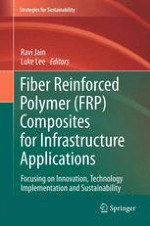2012 | Buch
Fiber Reinforced Polymer (FRP) Composites for Infrastructure Applications
Focusing on Innovation, Technology Implementation and Sustainability
herausgegeben von: Ravi Jain, Luke Lee
Verlag: Springer Netherlands
Buchreihe : Strategies for Sustainability
